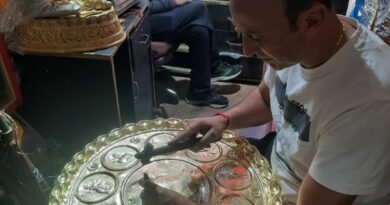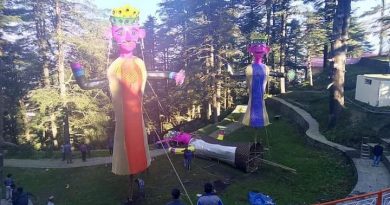Mystical Night of Dagaili: Keonthal Keeps Ancient Witch Festival Alive
In the heart of Himachal Pradesh’s Keonthal region, the air was thick with mystery and tradition last night as locals gathered to celebrate Dagaili, a centuries-old festival steeped in folklore and fear. Known as the “festival of witches,” Dagaili is one of the most enigmatic and spine-chilling celebrations in the state’s cultural calendar.
Observed annually on Chaturdashi and Amavasya of Krishna Paksha in the Bhadrapad month, Dagaili falls roughly two weeks after Raksha Bandhan. While its eerie reputation sets it apart, the festival is deeply rooted in the traditions of Shimla, Sirmaur, and Solan districts, with some communities also marking it on Krishna Janmashtami.
Local elders like Daulat Ram Mehta and Jabar Singh Thakur describe Dagaili as a night when demonic energies awaken and witches are believed to perform invisible dances under the cloak of darkness. To ward off these malevolent forces, villagers follow age-old rituals passed down through generations.
In the days leading up to Dagaili, priests of local deities visit homes, distributing rice and mustard seeds. These are placed at the main entrance on the night of Chaturdashi to form a protective barrier. Additionally, branches of the Bhekhal bush are hung on doors, windows, temples, and cowsheds to shield against evil.
One of the most unique customs involves preparing “dhingade”, patties made from arbi (taro) leaves. On the first night of Dagaili, these are sliced into four pieces using a sharp knife or axe and placed on the roof in all four directions—an offering to the witches to prevent harm.
According to local tantriks, Dagaili night is considered the most potent time for spiritual practices. The Amavasya during this festival is known as Kushotpatini Amavasya, a sacred day when people uproot kusha grass for worship and keep it in their homes for the entire year.
As dusk falls, a hush descends over the villages. Doors are bolted, and families stay indoors, wary of the supernatural. Stories abound of massive rocks mysteriously appearing overnight, believed to have been transported by witches—tales that continue to fuel the festival’s mystique.
Dagaili is more than just a celebration; it’s a living legend, a night when folklore comes alive and the line between myth and reality blurs in the moonless dark.



